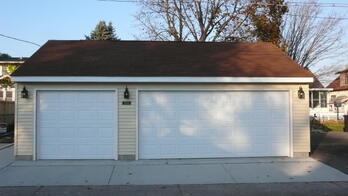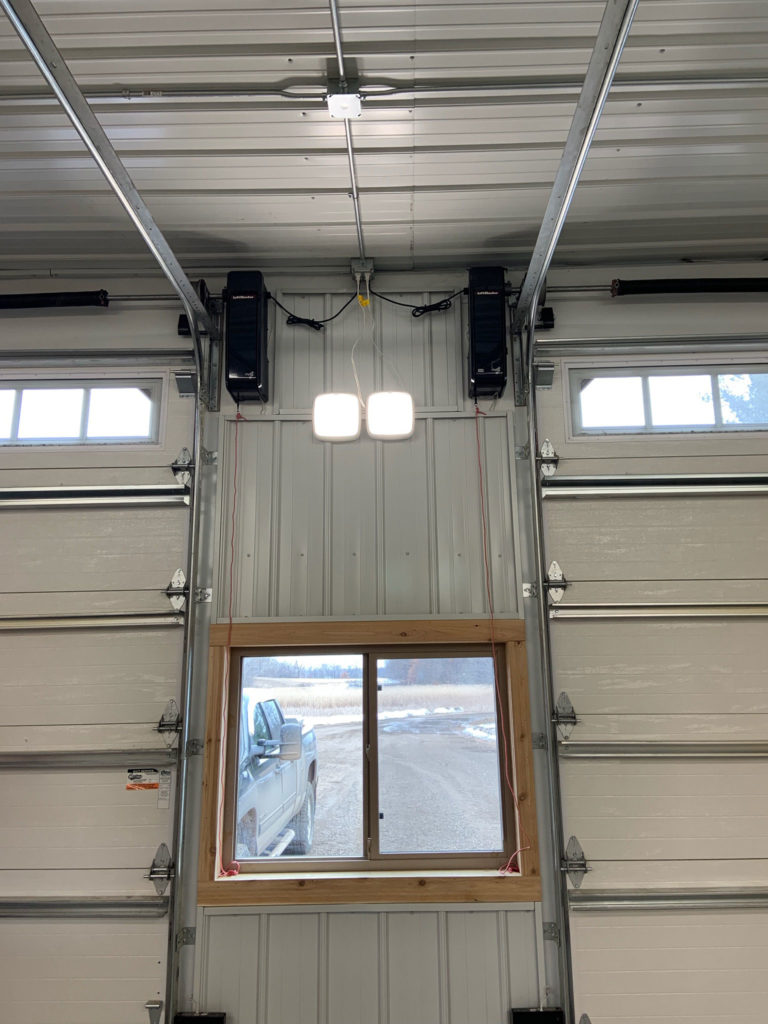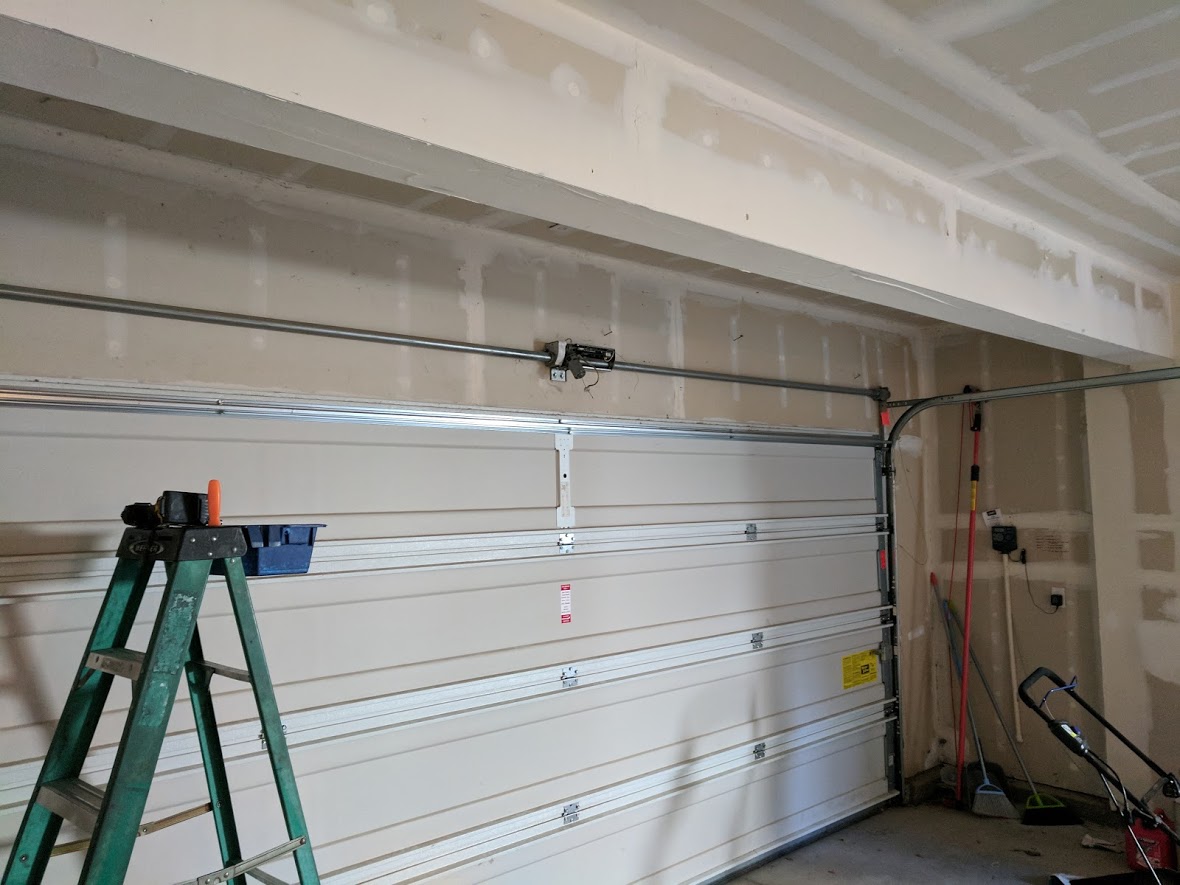
Homelink garage door opener is an advanced technology that allows you to control your garage door or security gate from your car. It is available in a variety of models and can be paired with many different types of garage door openers. Although it is simple to program and use, it's important to take safety precautions to make sure the job gets done properly.
To start off, your garage door opener needs to be set to the right mode and the Homelink unit needs to be located. Once you have done this, you can begin the programming process. It is important to note that not all garage door openers are compatible with the homelink system. Please visit the manufacturer's site for more details.
Typically, a Homelink device will contain a round or square "LEARN CODE" button. It's usually located next to the hanging antenna wire at the rear of the garage doors opener motor. You must press the button two seconds to activate it. Then, release the button quickly.

To signal the device's connection, a Homelink indicator lamp will light up. When the indicator flashes slowly, it's the Homelink's signal to you that the device is connected. If the light continues to blink, you can expect the programming process to take approximately 10 seconds.
Three buttons make up the HomeLink unit. Two buttons can be used to control the opener. For programming, however you will need to use one or more of the remaining buttons. The buttons are normally located above the center console or on the ceiling of your car.
A HomeLink Conversion Kit allows you to add a HomeLink controller to an existing residential garage doors opener. This kit comes with additional accessories and a remote control. To make installation seamless and easy, it may be necessary to use a HomeLink compatibility bridge depending on which opener you have.
It is important to test the opener once you have it programmed. It should work as long it does. You will need to program it again if the door does not open. Make sure that you don't try to close the door while you are still programming the opener. The motor could burn out.

Be sure to check the path of your garage door before you leave the house. This is because moving the garage doors can cause damage to your vehicle and/or cause serious injuries if they are in their path.
Although HomeLink is an amazing piece of technology it can be very dangerous if not used properly. Take safety precautions to ensure your garage doors remain locked.
FAQ
What should I do with my current cabinets?
It all depends on whether or not you plan to rent your home out. If you're planning to sell, you'll probably want to remove and refinish the cabinets. This gives buyers the illusion that they are brand new, and allows them to envision their kitchens once they move in.
However, if you want to rent your house, you should leave the cabinets alone. Many tenants complain about cleaning up after their previous tenants, including greasy fingerprints and dirty dishes.
The cabinets can be painted to look fresher. Be sure to use high quality primer and paint. Low-quality primers and paints can crack easily.
What is it worth to tile a bathroom?
If you want to do it yourself, go big. A full bathroom remodels an investment. However, quality fixtures and materials are worth the long-term investment when you consider how beautiful a space will be for many years.
The right tiles can make all the difference in how your space looks and feels. This quick guide will help with your selection of the best tiles, no matter if you're looking for small or big projects.
First, decide which type of flooring you'd like to install. Ceramics, porcelain, stone, and natural wood are common choices. Then, select a style--like classic subway tile or geometric patterns. The last step is to choose a color scheme.
You'll probably want to match the tile to the rest of the room for a large bathroom remodeling job. You could choose to use white subway tiles for the kitchen and bathroom, while using darker colors in other rooms.
Next, calculate the project's size. Is it time to update a small powder room? Would you prefer to add a walk in closet to your master bedroom?
Once you've determined the project's scope, visit local stores and check out samples. This allows you to get a feel and idea for the product as well as its installation.
Finally, shop online for great deals on ceramic and porcelain tiles. Many retailers offer free shipping and discounts on bulk purchases.
Why should I remodel rather than buying a completely new house?
While houses may get more affordable each year, the square footage you pay is still the same. Even though you may get a lot of bang for your buck, you also pay a lot for that extra square footage.
It's cheaper to maintain a house without much maintenance.
Remodeling can save you thousands over buying a new house.
By remodeling your current home, you can create a unique space that suits your lifestyle. You can make your home more comfortable for you and your family.
How much does it cost to gut and renovate a kitchen completely?
You may be curious about the cost of a home renovation.
A kitchen remodel will cost you between $10,000 and $15,000. However, there are ways to save money while improving your space's overall look and feel.
Plan ahead to save money. You can do this by choosing a design style that suits you and your budget.
You can also cut costs by hiring an experienced contractor. An experienced tradesman is familiar with all aspects of construction and will not waste time trying to figure out the best way to accomplish a task.
You should consider whether to replace or keep existing appliances. Replacing appliances can add thousands of dollars to the total cost of a kitchen remodeling project.
It is possible to choose to buy used appliances, rather than buying new ones. You can save money by buying used appliances.
You can also save money by shopping around when buying materials and fixtures. Many stores offer discounts on special occasions such as Cyber Monday and Black Friday.
How much would it be to renovate a house vs. what it would cost you to build one from scratch?
Gutting a home involves removing everything within a building including walls and floors, ceilings as well as plumbing, electrical wiring, appliances, fixtures, and other fittings. Gutting is done when you want to make some modifications before moving in. The cost of gutting a home can be quite expensive due to the complexity involved. The average cost to gut home ranges from $10,000 to $20,000, depending on your job.
A builder builds a house by building it frame by frame. Then, he adds walls and flooring, roofing, windows and doors. This usually happens after you have purchased lots of lands. Building a home can be cheaper than gutting. It usually costs around $15,000-$30,000.
It comes down to your needs and what you are looking to do with the space. You'll need to spend more if you plan to gut your home. However, if you want to build a home, you won't have to worry about ripping everything apart and redoing everything. You can design it yourself, rather than waiting for someone else.
Is $30000 too much for a kitchen redesign?
You can expect to pay anywhere from $15000-$35000 for a kitchen overhaul, depending on how much money you have available. You can expect to spend more than $20,000. If you are looking for a complete overhaul of your kitchen, it will cost more. For less than $3000, you can update appliances, add lighting, and replace countertops.
The average price for a full-scale renovation is usually between $12,000-$25,000. There are ways to save money but not sacrifice quality. You can replace an existing sink with a new one for around $1000. Or you can buy used appliances for half the price of new ones.
Kitchen renovations will take longer than any other type of project, so plan ahead. It's not ideal to begin working in your kitchen, only to find out halfway through that there isn't enough time to finish the job.
You are best to get started as soon as possible. Start looking at options and collecting quotes from various contractors. Then narrow your choices based price, availability, quality, or both.
Once you've found a few potential contractors, ask for estimates and compare prices. The best bid may not be the most affordable. It's important that you find someone with similar work experiences who can provide a detailed estimate.
Add all costs to the final cost. These may include additional labor, material charges, permits, etc. Be realistic about what you can afford and stick to your budget.
Tell the contractor if you don't like any of the bids. If you don’t like the first bid, let the contractor know and offer to give it another chance. Do not let your pride stop you from saving money.
Statistics
- Following the effects of COVID-19, homeowners spent 48% less on their renovation costs than before the pandemic 1 2 (rocketmortgage.com)
- About 33 percent of people report renovating their primary bedroom to increase livability and overall function. (rocketmortgage.com)
- Windows 3 – 4% Patio or backyard 2 – 5% (rocketmortgage.com)
- 55%Universal average cost: $38,813Additional home value: $22,475Return on investment: 58%Mid-range average cost: $24,424Additional home value: $14,671Return on investment: (rocketmortgage.com)
- 57%Low-end average cost: $26,214Additional home value: $18,927Return on investment: (rocketmortgage.com)
External Links
How To
How to Install Porch Flooring
While installing porch flooring is straightforward, it takes some planning. Installing porch flooring is easiest if you lay a concrete slab first. But, if you don’t have the concrete slab available, you could lay a plywood board deck. This allows you to install the porch flooring without making an expensive investment in a concrete slab.
Before installing porch flooring, you must secure the plywood as the subfloor. Measure the width of your porch to determine the size of the plywood strips. These strips should be placed along both sides of the porch. Next, nail them down and attach them to your walls.
Once the subfloor is secured, prepare the area for the porch flooring. This typically involves cutting the top layer of floorboards to the desired size. Then, you must apply a finish to the porch flooring. Polyurethane is the most common finish. You can also choose to stain your porch flooring. Staining is easier than applying a clear coat because you only need to sand the stained areas after applying the final coat of paint.
Once you have completed these tasks, you can finally install the porch flooring. Begin by marking the location for porch flooring. Next, cut the porch flooring to size. Finally, put the porch flooring in its place and nail it.
If you wish to improve the stability of your porch flooring, you can add porch stairs. Like porch flooring, porch stairs are typically made from hardwood. Some people prefer to add their porch stairs before installing their porch flooring.
Once your porch flooring is installed, it is time for the final touches. You first have to take out the old porch flooring and put in a new one. Next, remove any debris. Remember to take care of the dust and dirt around your home.